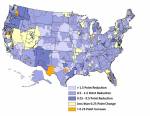When he took office as California’s new treasurer this month, John Chiang (D) issued a warning about rising health care costs for retired state workers:
“If we continue to do nothing, we will be sowing the seeds of a future crisis,” Chiang said. “The price tag associated with providing health care to retired state workers has quietly grown to rival or even eclipse the funding gap associated with public pensions.”
In an op-ed in the Sacramento Bee, Chiang urged state leaders to act now to avert problems later. Chiang also recommended significant increases to the state’s contributions to an investment fund for retiree health care costs.
Gov. Jerry Brown (D) recommended that state retirees pay more for health coverage.
We asked politicians, academics and consumer advocates how California should pay for the rising costs of providing health coverage for retired state workers.
We received responses from:






